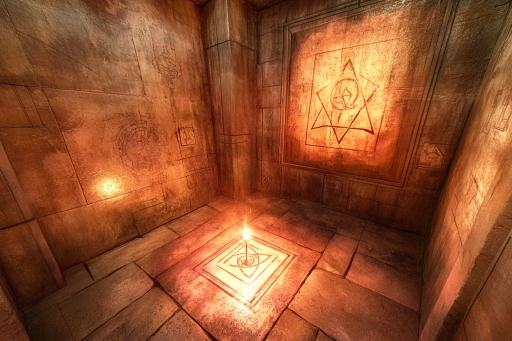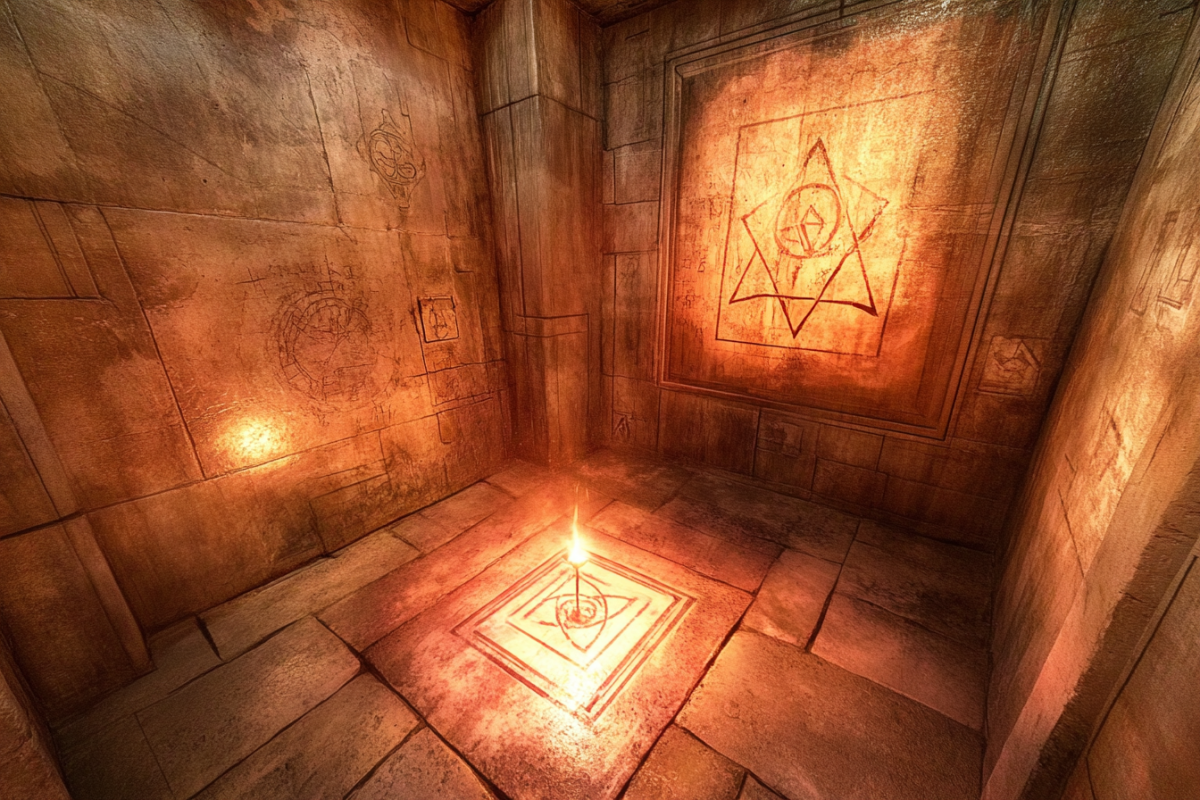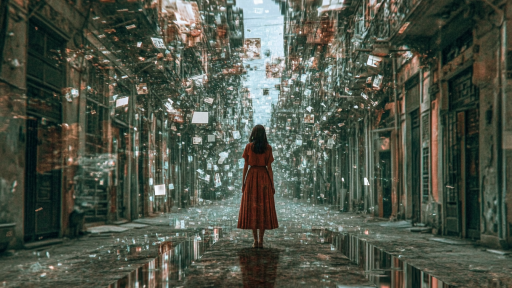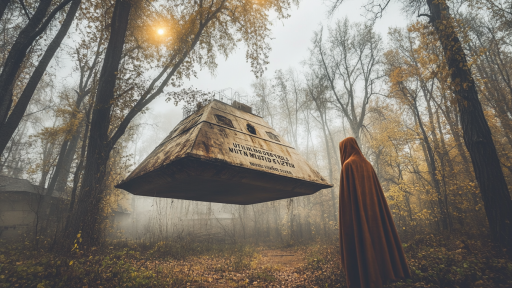
Symbols are powerful—they communicate meaning, shape belief systems, and evoke strong emotions. Across cultures and history, certain symbols have taken on disturbing connotations, tied to death, curses, and even forces beyond comprehension. Some were born out of fear, others out of warnings passed through generations, and a few remain shrouded in mystery. Whether ancient or modern, these unsettling symbols continue to provoke unease, their meanings shifting depending on who dares to interpret them.
The Black Sun

A symbol entwined with occultism and dark mysticism, the Black Sun has long been associated with esoteric Nazi ideology and forbidden knowledge. Found in ancient Germanic artifacts, its meaning remains cryptic, though it’s often linked to hidden cosmic forces and apocalyptic prophecies. While some see it as a representation of rebirth, others view it as a sinister emblem of destruction. Its presence continues to spark controversy, making it one of the most chilling symbols in history.
The Hand of Glory
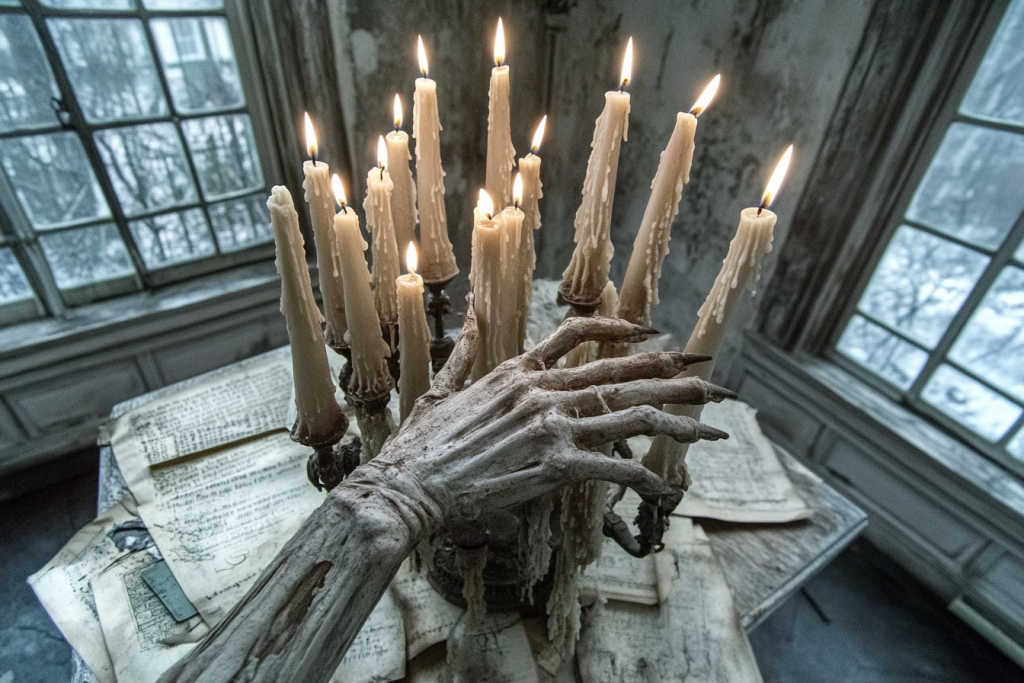
A gruesome relic of European folklore, the Hand of Glory was crafted from the severed hand of a hanged criminal and believed to grant supernatural abilities. Dipped in wax and used as a macabre candle, it was said to paralyze anyone within its glow and unlock doors for thieves. Legends warn that possessing one comes at a terrible cost, as the dead do not part with their limbs willingly. Even today, the eerie history of the Hand of Glory lingers in shadows.
The Ouroboros with a Twist

While the Ouroboros—the serpent devouring its own tail—is often a symbol of eternity, some variations carry darker implications. Certain cultures depict the creature as a rotting or decayed serpent, a representation of never-ending suffering or an unbreakable curse. In some apocalyptic beliefs, it signifies an endless cycle of destruction, where death feeds upon itself in a loop of eternal horror. This twisted version of the ancient symbol turns the idea of infinity into something truly disturbing.
The Eye of Providence (But Inverted)

The all-seeing eye is commonly associated with divine knowledge, but when flipped or distorted, its meaning takes a sinister turn. Found in secretive occult orders and conspiracy theories, the inverted Eye of Providence is said to represent hidden manipulation and control. Some believe it’s a sign of an unseen force watching over humanity—not as a protector, but as a puppet master. Whether paranoia or truth, its presence in shadowy places fuels countless unsettling theories.
The Whorled Cross of the Cult of Doom

Unlike the familiar swastika or solar crosses, this lesser-known variation appears in scattered archaeological sites, linked to long-lost doomsday cults. Some historians believe it symbolized a society obsessed with end-times prophecies, as its spirals mimic cycles of cosmic destruction. Others claim it was a mark of those who practiced human sacrifice, offering lives to appease unseen forces. Its exact meaning remains unknown, but its presence in forgotten ruins suggests a dark past.
The Broken Ankh

The Egyptian ankh represents life, but a shattered or reversed ankh is a symbol of death, loss, or an end to divine protection. In some tombs, desecrated ankhs have been found alongside cursed warnings, suggesting that tampering with them could bring misfortune. Modern interpretations see it as a mark of forsaken souls or severed spiritual ties. What was once a key to immortality becomes, in its fractured form, a dire omen.
The Sigil of Despair

Deep in occult traditions, symbols are used for protection and power—but some are crafted for malevolent purposes. The Sigil of Despair, a little-known glyph found in grimoires of forgotten sects, is said to bring endless suffering to those who bear it. Unlike protective sigils, its twisted lines resemble entangled chains, a visual metaphor for inescapable torment. Few dare to draw it, fearing that even its existence invites doom.
The Veve of the Forgotten Loa

Veves are sacred symbols in Vodou, meant to summon spirits, but some represent forces that are best left undisturbed. The veve of a lost, unnamed loa is whispered about in secret circles, said to belong to a spirit so wrathful that even its devotees erased its name. Those who attempt to recreate it claim to experience misfortune, as if the forgotten loa is reaching out from the void. Whether real or superstition, its existence is shrouded in fear.
The Death Rune

Runes were once sacred tools of knowledge and prophecy, but some carry a darker fate. The “death rune” resembles an inverted Algiz rune, a symbol of life, turning it into a harbinger of doom. Some ancient inscriptions use it in burial sites, while others claim it marks those fated for an untimely end. Whether coincidence or true warning, those who encounter it rarely forget its ominous shape.
The Red Mark of the Damned

In various folklores, a red symbol appearing on the skin is seen as a mark of misfortune or something far worse. Legends tell of people waking up with an unknown sigil burned into their flesh, signifying an unbreakable curse. Some believe it’s a supernatural brand, marking its bearer for a fate already sealed. Whether a myth or a terrifying reality, those who claim to have seen it never wish to again.
The Whispering Spiral

A mysterious pattern found in scattered cultures, the Whispering Spiral is said to carry hidden messages for those who dare to listen. Some claim staring at it too long induces visions, while others believe it was used in rituals to communicate with unseen entities. Certain ancient texts warn that tracing its lines leads to madness, as if the spiral itself speaks in a language no human should understand. Whatever its origins, its eerie presence persists in forgotten places.
Symbols That Refuse to Stay Silent

Symbols are more than just lines and shapes; they are ideas given form, carrying whispers of history, belief, and sometimes, fear. What one culture sees as sacred, another may fear as cursed—turning a simple mark into a sign of the unknown. Some of these disturbing symbols still hold power over those who believe, while others remain unsettling mysteries that defy explanation. But the real question is: do these symbols disturb us because of what they mean, or because of what they reveal about ourselves?

